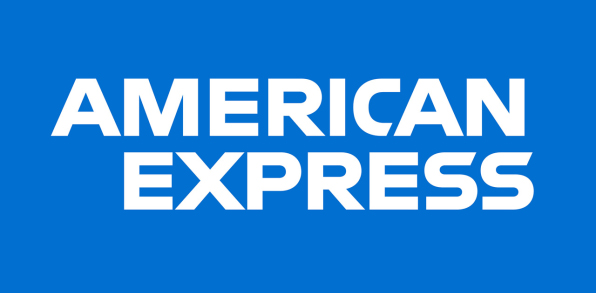Operating systems have become indispensable components of our daily lives, and their significance in technology is enormous. The backbone of any computing device is an operating system (OS), which is software that coordinates the computer hardware and software management resources.
The use of a computer cannot be performed in the absence of an operating system. It enables us to connect to the internet, view data, and execute programs on our computers.
In this blog, we will explore the types of operating systems, their relevance to technology, and their evolution over time.
What is an operating system?
Operating systems (OSs) manage all computer operations, including programs and applications. The operating system on your device oversees resources, software, and user interfaces. Working with a computer’s hardware and software is simpler with an operating system.
An operating system consists of both the kernel and the shell. Data is processed in hardware by the kernel and then sent via the operating system to the shell, the second component. The shell controls operating system interaction and offers system instructions based on your input. Although your smartphone has the latest operating system, upgrading it might enhance performance.
Why are operating systems important in technology?
Operating systems are essential to our everyday lives, and their significance in technology is paramount. An operating system (OS) is software that oversees computer hardware and software resources, serving as the foundation of every computing device.
An operating system is essential for a computer’s operation. It enables us to connect to the Internet, view data, and execute programs on our computers.
The Big Five Operating Systems
Operating systems come in five major types. These five OS models power your tablet, phone, computer, or other mobile gadget. Knowledge of programs and system types can help you maintain security and user access, complete routine operations, and much more, regardless of your involvement in an IT job or simply a regular computer and phone user.
Windows Operating System
Windows is the first and most popular venue OS. Most of the millions of public computers run Windows. Microsoft, the most significant OS firm, develops and supports it. Windows is the dominant business OS on PCs, clients, and server backends.
An application that works with all Microsoft OS versions may delegate OS capabilities. It collaborates with other developers like a corporation. It may have hindered progress and boosted small business maintenance costs. Windows was an MS-DOS GUI until 1995.
Like its predecessors, Microsoft realized the need to deliver many visuals on basic CPUs to ease operations like generating windows and processing mouse and keyboard inputs. Recently, Windows has faced tough competition. Additional contenders include Macintosh, OS/2, NeXTSTEP, BeOS, Linux, and Solaris OS. Windows will remain essential owing to the fast expansion of laptops and wireless devices and its extensive use outside specialist computer applications. It is expected to survive as the leading OS for education and knowledge workers, based on Oracle, SAP, and Computer Associates.
MacOS
Apple’s macOS is in direct competition with Microsoft Windows. macOS and Windows are examples of proprietary operating systems developed, designed, and sold by the company that conceptualized, designed, and developed them.
The companies are responsible for designing and selling these items, and they are not intended for user modification or modification. The proprietary macOS and OS X systems, introduced 20 years ago, are the operating systems that power Apple and Macintosh computers.
Due to their user-friendliness and constant improvement, macOS and Apple/Mac products are well-known and adored by their consumers. Users are excited about macOS because of its quick processing rates, straightforward desktop interface, and valuable services. Many customers love how quickly they can connect to their computers and mobile devices and how Apple systems are recognized for being free of bugs and hackers.
Linux
In contrast to Windows and Apple, Linux is not a proprietary program but a family of open-source operating systems. It distinguishes Linux from both of these companies. In other words, everything may be altered and distributed by anybody. Even though Linux is the least well-known operating system on our list, it is free and comes in various open-source editions.
Linux is a widely used operating system due to its simplicity of customization and the diverse array of options it provides users with the necessary skills. Linux is optimal for individuals who can customize and operate operating systems. If you are intrigued by this type of coding and backend work, it may be beneficial to acquire a Linux system and begin modifying it.
iOS
Apple’s iOS is another mobile operating system exclusively used for iPhones, which are among the most popular mobile devices on the market. Users are consistently provided with new features, software expansions, and regular updates for iOS integrations, regardless of their device age.
Numerous users highly value iOS’s distinctive user interface with touch gestures and user-friendly nature. This operating system also enables users to establish connections with other Apple devices, facilitating communication with other individuals or devices.
Android
The operating system used by companies such as Google for its Android mobile devices and tablets is derived from a Linux distribution and other open-source applications.
Android OS is Google’s primary mobile operating system for smartphones and tablet devices. Since its conception, Android OS has become an alternative to Apple’s iOS for a smartphone user; the demand only continues to surge with every new release.
The Collective Impact of Operating Systems
Technological Advancements
Operating systems were at the forefront of technological revolutions, allowing innovations that include artificial intelligence, machine learning, and cloud computing. Many features, from multitasking, virtual desktops, and voice recognition, now form the fabric of platforms with limitless possibilities on what technology could achieve.
Cross-Platform Compatibility
Modern operating systems promote cross-platform interoperability capabilities, whereby any device can communicate without complication. For example, Windows and Android pioneered features like file and app sharing, while Apple brings this power of interoperability to its life ecosystem.
Security and Privacy
Operating systems are the best tools for protecting users from cyber threats. Windows Defender, Gatekeeper on macOS, and app sandboxing on iOS are some features that set the tone for global cybersecurity standards.
Accessibility and Inclusivity
Operating systems have made technology more accessible. For example, screen readers, voice commands, and user-friendly interfaces are features designed to suit people with different needs, thus providing inclusiveness in the digital age.
Final Thoughts
The impact of operating systems are better than just software; they are the base of modern technology.
Windows 10 Professional software brought productivity and security to the masses, macOS redefined design and creativity, Linux enabled open-source innovation, Android democratized smartphone usage, and iOS set standards for performance and security. Together, they have shaped the digital world, driving advancements in hardware, software, and user experiences.
Knowing how these operating systems affect us allows us to realize how far we have come and prepares us for the exciting things that are yet to come. Whether you’re a regular user or a tech enthusiast, it’s evident that operating systems play a vital role in our digital experiences.



